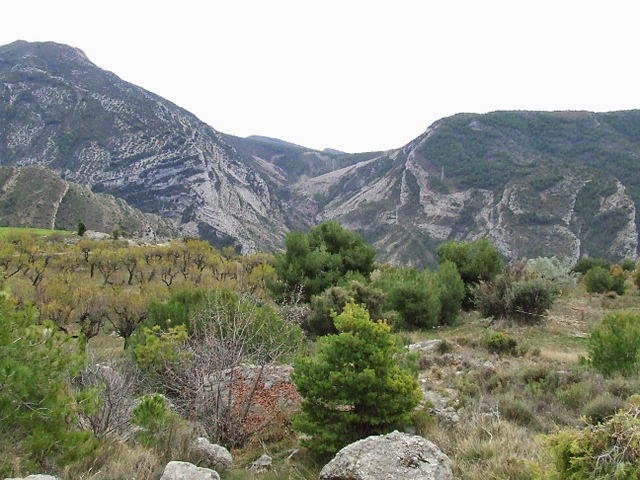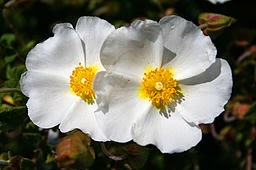By Helen Roberts
It can be a little difficult to pin down one of the Friends of the University of Bristol Botanic Garden for an interview these days. Between organising the extremely popular Art and Sculpture Festival, planning for 40th anniversary celebrations – which includes a concert this coming Saturday (21st March) – and their own busy lives, the Friends are hard at work. I spoke to Pat Davie, the Chairman of the Friends, about how the Friends began, their role over the years and what they hope to achieve in future.
Pat joined the Friends group in 1995 after she attended some courses on Garden History at the Botanic Garden; it was then that she learnt about being a volunteer. Since then, she has taken on a number of roles and very much enjoyed being part of the working life of the Garden.
“I am extremely busy volunteering doing various jobs but I wouldn’t have it any other way, the Gardens are a very special place.”
The Friends are an essential part of the Botanic Garden with 1,900 members and over 200 of these members actively volunteering in the garden. They provide valuable resources for the gardens in many different guises, be it the organisation of events and activities to providing funding for trainee horticulturists.
How did the Friends start?
The Association of Friends of the University of Bristol Botanic Garden formed in 1975 when the Botanic Gardens were threatened with closure due to a financial crisis at the University of Bristol. The Friends needed to raise the profile of the garden and persuade academics, administrators and the community at large of the importance of the gardens as a teaching and research resource. Peter Haggett, Emeritus Professor in Urban and Regional Geography at the University of Bristol, was one of the founding members; “Our primary purpose was to get the University to change its mind and retain Bracken Hill”, which was the Botanic Garden site at that time. “The formation of an organisation of ‘Friends of the Botanic Garden’ was a key tactic in that strategy,” explained Peter.
As well as Peter, the original committee included the curator of the garden at the time, Dr David Gledhill (Botany), Keeper of the Garden, Dr Mark Smith, and local campaigner Mrs Anne Hewer (daughter of Hiatt Cowles Baker, a former Pro-Chancellor of the University).
The inaugural meeting was held on 8 December 1975, where the draft constitution was accepted. The aims of the group were to:
• promote interest in botany and horticulture,
• provide a meeting ground for persons with these interests,
• give members opportunities to see and cultivate scarce and unusual plants, and
• further the development of the amenities and educational services of the Botanic Garden.
| A photo from a 1976 edition of the Bristol Evening Post, showing Mark Smith in the Botanic Gardens. |
The annual fee to be a Friend then was £3 (it’s now £25 for an individual or £35 for a family, which is still good value for money). Membership included free access to the gardens at weekends and public holidays, a number of rooted plants and seed packets, lectures and social events.
Initially, 200 people joined and membership has gradually increased over the years to 1,900. Now, to celebrate 40 years of supporting the garden, the Friends would like to see that membership break 2,000 for 2015.
One of the popular events in the early days of the Association of Friends, was the plant sales started by Dr Mark Smith and from 1984 developed further by Nicholas Wray. According to Pat, the sales were, “extremely popular and queues started early and were very long”. The sale became an important source of income, but with the decision to move the garden the last of the major plant sales happened in
 |
| A photo from the sponsored walk from Bracken Hill, across Clifton Suspension Bridge, to The Holmes. |
2001, after which all efforts were put into preparations for the garden’s move to The Holmes allowing Bracken Hill, to be sold for redevelopment.
The move from Bracken Hill to the Holmes was a huge undertaking and one memorable aspect of the move involved a sponsored walk from Bracken Hill to The Holmes in May 2005 across the suspension bridge with wheelbarrows full of plants! This was to raise the profile of the Botanic Gardens and help raise funds for the move.
The Friends in more recent years
The basic costs of the design and development of the new garden (now in its 10th year) were covered by the University, but many other projects over the years have been funded by the Friends. These include the Welcome Lodge, which was part funded by a long standing member, the replacement of tree ferns in the evolutionary dell when the originals died during a particularly hard winter, purchase of new plants for various displays in the garden and development of the tropical pool in the glasshouses.
One of the most recent appeals has been raising funds for hosting a horticultural trainee full time at the Botanic Garden. The Friends achieved the remarkable feat of raising over £10,000 to fully fund a trainee for a year, thereby supporting and inspiring the next generation of horticulturists. Some of the fundraising events over the last year include an exhibition of botanic art, the Blue Notes Jazz concert and the Friends’ open gardens scheme.
“Without the consistent financial support and direct help by many individual Friends, the Botanic Garden would have simply not survived. Instead in the early years it did survive and as the years passed by and support gathered the garden has seen many investments in both people and plants. The huge task of moving the plant collections and developing the new Botanic Garden has been an immense challenge with the resources and pairs of hands available. The Friends’ financial and physical support has helped the new garden to establish so that those that use it can be enthused, inspired and excited about plants and the many roles they play in maintaining healthy ecosystems. Our students have one of the most modern and relevant Botanic Gardens in the UK to inspire them in their studies. The Friends have helped make this possible.” – Nick Wray, Curator
What are the benefits of becoming a Friend?
For starters, you receive free entry to the gardens! Other benefits include free horticultural lectures, special seed packets from the garden that are not available to the public, visits to private gardens of Friends, excursions to other interesting gardens, early booking and reduced cost entry to events, and a quarterly newsletter.
The newsletter, put together by volunteers, contains useful information with pieces written by the Director and Curator of the Gardens, and to further bolster links with the University, there are articles written by members of the School of Biological Sciences. Froggie also has a repeating section in the newsletter that includes fantastic educational activities for children.
A concert to start celebrating the 40th Anniversary
The Friends of the BBG are holding a celebratory concert with the Bristol University Singers and the Bristol University Madrigal Choir at 2:30pm on Saturday 21st March. The event will be held in the Victoria rooms, Queens Road, Bristol and promises to be a relaxing afternoon of music that includes popular opera choruses and summer madrigals. A team over the winter has been working tirelessly and collated 40 years worth of photographs, papers, committee meeting notes, newsletters and extracts of memorable moments, some of which will be on display at the concert and at other celebratory events throughout the year.
For more information about the concert please visit bristol.ac.uk/botanic-garden/events/2015/179.html
For Friends general information please visit bristol.ac.uk/botanic-garden/support/friends/




















